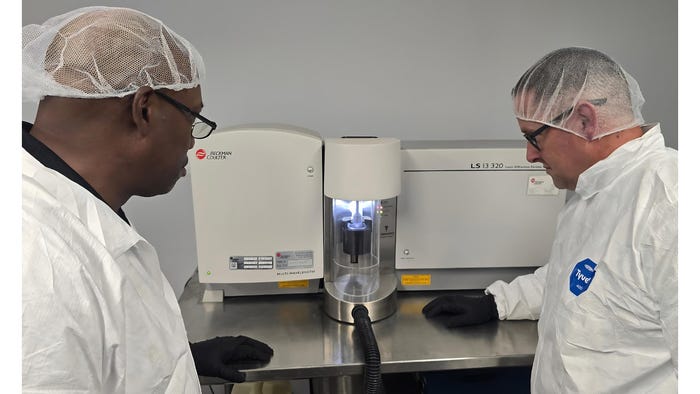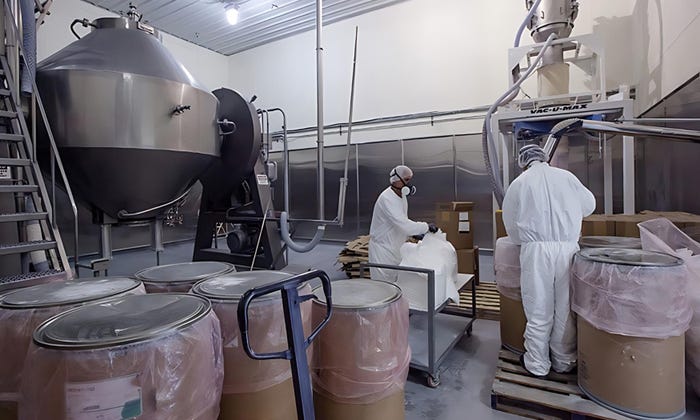Optimizing Powder Drying: Cutting Costs & Accelerating Processes (Published in Powder & Bulk Solids)
Adopting modern, automated vacuum tumble dryers is a data-driven decision that can lead to better results, faster production, and lower operational costs.
In process development, particularly for pharmaceutical, food processing, chemical, and nutraceutical products, drying is a critical operation that significantly impacts both production efficiency and product quality. Historically, drying has been approached as a mix of art and trial-and-error, with operators manually adjusting temperature, pressure, and vessel speed, leading to variability and inconsistency in results. However, advancements in dryer technology, particularly vacuum tumble dryers, have streamlined and optimized this crucial step, making the process more predictable, scalable, and cost-effective.
Understanding the Drying Challenge
Drying powders and slurries in industries like nutraceuticals involves managing moisture removal without compromising the integrity of the product. Materials vary widely in their moisture content, temperature tolerance, and reactivity. Inconsistent drying can lead to issues such as degradation of active ingredients, uneven texture, or wasted production time due to long drying cycles. The need for precise and repeatable results is paramount, especially when working with formulations that may contain multiple ingredients with varying moisture profiles.
Traditional drying systems like tray dryers and spray dryers often fall short in this regard. Tray dryers, for example, rely on passive heat transfer from an oven, resulting in uneven drying and long cycles. Spray dryers, while efficient at producing large volumes of material, require significant energy input and are not suited for handling complex or hazardous formulations. Both systems also lack the necessary automation to adjust to batch-to-batch variability, often relying on manual adjustments that can introduce human error and reduce process efficiency.
The Vacuum Tumble Dryer Solution
The introduction of vacuum tumble dryers has transformed the drying process, offering significant improvements in both operational efficiency and product consistency. Unlike traditional drying methods, vacuum tumble dryers utilize a combination of heat and vacuum to reduce the boiling point of moisture, allowing for faster, more efficient drying without subjecting the material to excessive temperatures. Here’s how this system stands out:
* Consistent Results through Automation: Vacuum tumble dryers are equipped with sensors that continuously monitor key parameters such as temperature, pressure, and humidity. These systems automatically adjust vessel speed, temperature, and other factors based on pre-programmed recipes or quality control specifications. This allows the system to adapt in real time to variations in the moisture content of incoming materials, ensuring consistent results. For example, a batch with higher moisture content can trigger longer drying times, while drier batches may require faster processing.
* Efficient Solvent Recovery: A major cost advantage is the ability to recover solvents such as alcohol or water through the vacuum process. As moisture is removed from the material, the vapor is condensed and collected in a receiver tank, allowing for its reuse or disposal. This reduces both material costs and environmental impact, particularly in industries like nutraceuticals where the use of solvents is common.
* Faster Drying Times: The vacuum environment significantly accelerates drying times compared to traditional methods. For instance, while tray dryers may take several hours to achieve the desired moisture content in a batch, vacuum tumble dryers can achieve uniform drying in a fraction of the time—often up to three times faster. This is especially important in high-demand industries where time-to-market is a competitive advantage.

Advanced Powder Solutions laboratory
Example of Improved Drying Efficiency & Consistency
A nutraceutical company faced significant challenges with its drying process, using traditional tray dryers to process powdered ingredients for its supplement line. The company experienced inconsistent drying results, leading to quality variations between batches. To address these issues, the company implemented vacuum tumble dryers, resulting in several key improvements:
* Drying Time: The vacuum tumble dryer reduced the drying time from 6 hours per batch to just 2 hours. This increased throughput by 200%, allowing the company to meet growing demand without investing in additional equipment.
* Batch Consistency: With automated control over temperature, pressure, and vessel speed, the company achieved a 95% reduction in batch-to-batch variation. This consistency was critical for maintaining the potency of active ingredients and ensuring the final product met strict quality standards.
* Cost Reduction: The company saw a 20% reduction in operational costs, thanks to solvent recovery and the more efficient energy use of the vacuum system. Additionally, labor costs were cut by 30% due to the automated nature of the system, which required less manual oversight.
Process Optimization and Testing
Comprehensive testing and process optimization are crucial for ensuring that the drying process is efficient, cost-effective, and scalable. Here are some key aspects to consider:
* Thorough Testing and Analysis: Conducting extensive testing on materials to understand their characteristics, such as particle size, flow properties, and moisture content, helps in developing a robust drying process that ensures consistent quality.
* Process Development: Developing and optimizing the drying process involves trial and error in the lab to determine the best parameters for drying, such as temperature, pressure, and drying time. This helps in identifying potential issues early and finding solutions to avoid costly mistakes during commercialization.
* Recipe Management: Utilizing advanced automated recipe management systems, such as those from GEMCO, to quickly adjust process parameters and improve efficiency. This approach allows for the creation of multiple recipes and testing them to find the optimal process for different materials.
Advanced Powder Solutions facility material loading
Why Vacuum Tumble Dryers Excel
Vacuum tumble dryers distinguish themselves from traditional dryers through their ability to deliver precise, uniform drying with minimal operator intervention. Key features that contribute to this efficiency include:
* Automation: Systems continuously monitor and adjust parameters such as temperature, pressure, and vessel speed in real-time, ensuring consistent product quality and reducing the risk of human error.
* High Efficiency: The combination of vacuum and controlled heating in vacuum tumble dryers allows for faster drying at lower temperatures, which reduces energy consumption and prevents thermal degradation of sensitive materials.
* Safety Features: Advanced safety mechanisms, including nitrogen purge systems, pressure relief valves, and interlocks, are standard in vacuum tumble dryers, making them suitable for handling volatile or hazardous materials.
These features make vacuum tumble dryers a superior choice for optimizing drying processes across various industries.
Comparing Drying Technologies
To further highlight the advantages of vacuum tumble dryers, let’s compare them to more traditional systems:
* Tray Dryers: These systems typically suffer from uneven heat distribution, long drying cycles, and higher energy consumption. The lack of mechanical agitation means that wet material remains static, often leading to uneven drying. For example, with tray dryers, the moisture content can vary by as much as 20% across a batch, resulting in inconsistent product quality.
* Spray Dryers: While spray dryers are efficient for large-scale operations, they require high levels of energy and are unsuitable for sensitive materials or formulations that require precise temperature control. Moreover, spray dryers require complex exhaust systems to handle flammable or toxic solvents, increasing operational complexity and regulatory burden.
In contrast, vacuum tumble dryers deliver faster drying times, lower energy consumption, and superior product consistency. Additionally, they are more versatile, handling both water-based and solvent-based materials without the need for complex reconfiguration.
Future of Powder Processing
By integrating automation, precise temperature control, and solvent recovery, these systems address the core challenges of inconsistent drying, long processing times, and high operational costs. For industries like nutraceuticals, where product consistency and efficiency are crucial, adopting this technology can result in significant improvements in both product quality and profitability.
The nutraceutical company example illustrates the clear benefits of transitioning to advanced drying systems. With improvements in batch consistency, drying time, and cost efficiency, these companies can scale operations, meet market demands, and improve product quality with confidence.
In conclusion, for companies aiming to optimize their drying process, adopting modern, automated vacuum tumble dryers is a data-driven decision that can lead to better results, faster production, and lower operational costs.


